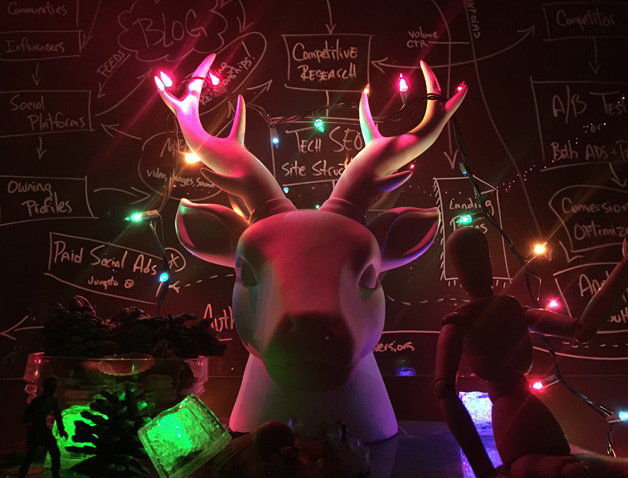We’re pretty good at criticizing things. We can spot the flaws instantly. But that’s different than the critical exploration of whatever it is we’re trying to accomplish. Through critical exploration, you’re learning what it takes to make a great design from within the space in which we try to solve a problem.
I ask people if they do any critiques at all amongst themselves and they say “Oh, yes. All the time.”
However, when I ask them what it is they do, they basically say they have a meeting where someone’s work is criticized for what’s missing. It’s mostly a meeting that involves people that haven’t given the design problem or solution much thought, until that very moment, ripping apart the work of someone who has.
These critical design reviews are complete miserable experiences for those that actually put thought into it, and those that are there only to feel important. Everyone completely dreads them. The experience makes them feel like crap, and next thing you know, they go ahead and schedule another meeting with same intentions.
The difference between a critique and a critical design review is that a critique is not for the sole purpose of finding flaws. It’s there to learn from the design and to explore what part of it works well, and where it could actually be improved.
In a well-run critique, we differentiate the discussion of “What are we trying to do with this design?” from the discussion of “Does this rendition accomplish it?”. By separating both of these, we’re avoiding the act of grilling into the designer’s work just because they are unaware of a critical requirement or need.
The critique technique we use has a structure. For all the people who are participating for the first time, we start off each session with a brief intro to the technique, then the designer goes ahead and describes what they were trying to accomplish with their design. What was the problem? What were the priorities they took under consideration? What did they bring from what they learned in previous critiques? etc, etc…
Now if everyone in the meeting agrees with the designers approach, we move on, but if someone thinks we’re solving the wrong problem, or that we didn’t take the right priorities into account, we make those individuals speak up and have a say. Ideally though, these issues would of been discussed prior to the designer putting in hard work into the iteration.
So lets say the designer shows us their work They specifically answer to what the design is trying to do, telling us what they were thinking during the process, and how they solved the important problems. The goal isn’t to only show us the final design product, but to give us the actual thinking behind it — opening up their rationale.
After the designer has shown everyone what they did and why they did it, everyone goes ahead and starts talking about what they liked. After all, there’s something to always like in any designer’s work. Pointing out what everyone likes isn’t just about being nice and respectful. It’s about helping everyone understand the qualities that are desirable. This is one area where critical design reviews fail miserably at.
Everyone in the meeting can go ahead and explore the design. This is often done with exploratory questions and not with critical commentary. Here’s an example: “Have you thought about how users will share the photos with their friends?”, “Have you considered how the application works when there’s no network connectivity?”, etc.
By posing their thoughts as questions, the designer can say if they already thought about that issue or not. If they have, it’s a great opportunity for them to explain their thinking behind it. If they haven’t, then they’ll most likely respond with “No, I haven’t thought about that yet”, and move forward from there.
Of course, we record everything that comes up in the meeting — what people liked and what questions they asked. After the meeting, we go ahead and review the recordings making sure we’ve captured everyone’s thoughts. We encourage conversations that help us explore what we’re trying to accomplish.
From the meeting, the designer takes everything they’ve heard and integrates it into their next iteration — presenting it at the next critique for the team.
Everyone using this process tells us they get much more out of each session, while also enjoying the process of learning about their designs. It also doesn’t hurt knowing that your designs show a marked improvement.
Want Us To Boost Your Conversions Bigtime?
Get Your Free & Discreet Consultation With Control Square Now!
We’ll reach out to you ASAP.


